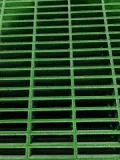loading...
- No. 9, Xingyuan South Street, Dongwaihuan Road, Zaoqiang County, Hengshui, Hebei, China
- admin@zjcomposites.com
- +86 15097380338
- Welcome to visit our website!
Innovative FRP Grating Solutions for Enhanced Platform Performance and Durability
The Innovation of FRP Grating Platforms A Sustainable Solution
In recent years, the construction and industrial sectors have witnessed a significant shift towards sustainable and efficient materials. Among these, Fiber Reinforced Plastic (FRP) grating platforms have emerged as a forefront solution, revolutionizing various applications across industries such as construction, petrochemicals, water treatment, and even in recreational facilities. This article explores the attributes, applications, and environmental benefits of FRP grating platforms, emphasizing their significance in modern construction.
What is FRP Grating?
FRP grating is a composite material made from a polymer matrix reinforced with fibrous materials, primarily glass or carbon fibers. This unique combination results in a lightweight yet remarkably strong structure that is highly resistant to corrosion, chemicals, and harsh environmental conditions. The manufacturing process of FRP includes pultrusion, molding, or filament winding, which allows for tailored designs to accommodate various load-bearing requirements.
Key Advantages
1. Corrosion Resistance One of the most compelling advantages of FRP grating platforms is their exceptional resistance to corrosion. Unlike traditional materials like steel or aluminum, FRP does not rust or degrade when exposed to chemicals, moisture, or extreme weather. This makes them ideal for use in environments where chemical spills or harsh weather conditions are prevalent.
2. Lightweight and Durable FRP grating platforms are significantly lighter than metal grating, making them easier and safer to handle during installation. This lightweight characteristic reduces the load on structural supports, enabling the design of more efficient structures. Despite being lightweight, FRP grating maintains high strength, capable of withstanding heavy loads in various applications.
3. Versatility in Design FRP grating can be produced in various shapes, sizes, and colors, offering designers and engineers remarkable flexibility. Whether for pedestrian walkways, industrial floors, or chemical processing areas, FRP can be tailored to meet specific project requirements. Additionally, the ability to fabricate custom designs ensures that they can seamlessly integrate into any environment.
4. Slip Resistance Safety is a paramount concern in any industrial or construction setting. FRP grating platforms can be manufactured with textured surfaces to improve slip resistance, enhancing safety even in wet or oily conditions. This feature is particularly beneficial in areas such as factories, warehouses, and docks, where spills may occur.
5. Reduced Maintenance Costs The durability and corrosion resistance of FRP grating platforms translate to lower maintenance costs over time. Unlike metal gratings, which require regular maintenance and replacement, FRP platforms can often be installed and forgotten, providing long-term cost benefits.
frp grating platform

Applications of FRP Grating Platforms
FRP grating platforms find applications in a wide range of industries
- Industrial Facilities They are commonly used in chemical processing plants, waste treatment facilities, and manufacturing sites due to their resistance to corrosive environments.
- Marine and Coastal Structures Given their resistance to saltwater and marine conditions, FRP grating platforms are ideal for docks, piers, and other coastal structures.
- Power Plants In both renewable and traditional power stations, FRP is utilized for walkways and platforms that require a balance of safety, strength, and resistance to harsh chemicals.
- Recreational Areas FRP grating is also finding its place in parks and public spaces, where slip resistance and aesthetics are essential. They are used in boardwalks, pool areas, and playgrounds.
Environmental Benefits
As the world pivots toward sustainability, FRP grating platforms present an eco-friendly alternative to traditional materials. The production process of FRP can be more energy-efficient, and its long lifespan reduces waste generation. Furthermore, by not requiring chemical treatments or coatings often needed for metals, the environmental footprint of FRP is considerably lower.
Conclusion
The rise of FRP grating platforms represents a significant advancement in material science, providing a robust and sustainable solution across various industries. With their unique properties and diverse applications, FRP gratings are setting the standard for modern construction practices, bolstering safety, efficiency, and environmental sustainability. As we continue to innovate and seek out responsible materials, the role of FRP in shaping our infrastructure and industrial environment will undoubtedly expand.
-
The Rise of FRP Profiles: Strong, Lightweight, and Built to LastNewsJul.14,2025
-
SMC Panel Tanks: A Modern Water Storage Solution for All EnvironmentsNewsJul.14,2025
-
GRP Grating: A Modern Solution for Safe and Durable Access SystemsNewsJul.14,2025
-
Galvanized Steel Water Tanks: Durable, Reliable, and Ready for UseNewsJul.14,2025
-
FRP Mini Mesh Grating: The Safer, Smarter Flooring SolutionNewsJul.14,2025
-
Exploring FRP Vessels: Durable Solutions for Modern Fluid HandlingNewsJul.14,2025
-
GRP Structures: The Future of Lightweight, High-Performance EngineeringNewsJun.20,2025
